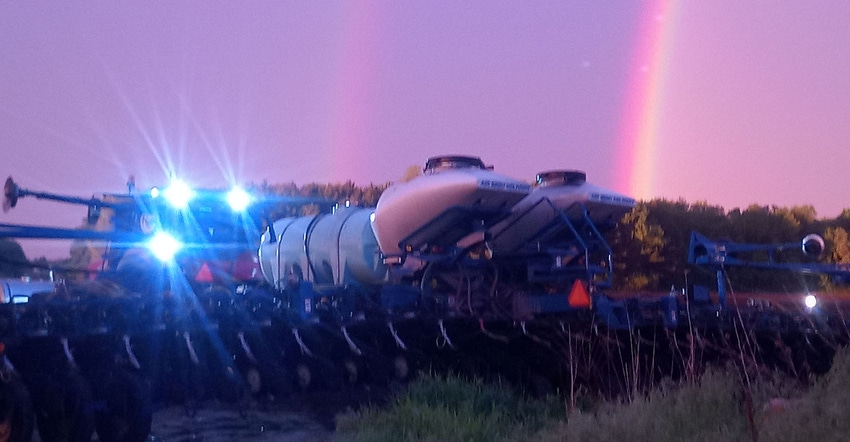May 24, 2019

Last week I began to write a blog that focused on prevented plant (PP) crop insurance options. By the time I got done going down that rabbit hole, three things had happened: I missed my deadline, the blog was a good read for a sleepless night, and the fields had dried (dried being a relative term).
We were able to plant two eight-hour days between rains this past week, Thursday and Monday. We didn’t get a lot done and are right now about 10% complete.
I know this is better than a lot of places where the seed is still in the shed. I’ve only heard reports of a couple of pockets where planting progress is over 50%.
Monday we planted the only full season corn we will put in the ground this year. We made the decision to swap out maturities. We traded remaining 112-plus day corn down to a 102-day and shuffled everything else around.
Given the opportunity, we will plant corn until at least June 5th.
Who knows, with the current forecast June 5th may be the next time fields are fit to plant. Meanwhile we try to keep busy and do some little jobs or projects every day. It’s hard to find ambition when it’s this dreary though, especially when you know that the real work lies ahead.
How attractive is Prevent Plant?
Back to the prevented plant insurance option - unless you own your land and are willing to walk away this year, PP may not be an attractive option. As a brief example, if your farm yields, rents, and expenses are in line with what Purdue University calls ‘average Indiana farm ground’, PP will succeed at locking you in around a $100 per acre loss. PP may however, look better than laying out the cash to grow a crop where your crop insurance guarantee may fall $250 short of breakeven.
I’m not sure there is a winner in this conversation. I’m glossing over many assumptions here. If you’re considering this, you better talk to your crop insurance agent!
Government payments
Now, if you really want to add to the complexity there a couple more items to consider. What about the proposed ‘Trump’ payments? If they favor soybeans again like they did last year, it could really get interesting. There are guys that say they’re going to plant all beans. At the same time, seed dealers are telling me contrarians are calling in to try and get rid of soybean seed and find corn seed.
In the end, this year, it will likely be the weather that makes the planting decisions. Regardless, you won’t get paid from this program unless you produce bushels, so that is another knock against leaving ground idle.
In 1993, flooding was centered more around the river basins. I don’t specifically remember, but I’m told that year crop insurance let guys back in and purchase PP after the fact. This idea is being kicked around again this year but sounds unlikely that we will have a government decision before we have to make our decisions. If they let us go up to 75% PP, that 20% may make a difference.
Just one more piece to the puzzle.
The opinions of the author are not necessarily those of Farm Futures or Farm Progress.
About the Author(s)
You May Also Like






